Bài giảng Nghệ thuật lãnh đạo - Chapter 6: Developing Leaders
Purpose
After studying this chapter, you will be able to:
●Define the elements of leader development
●Describe the elements of learning
●Review areas that are addressed in leader development
●Outline criteria of an effective development program
●Present the methods used in leader development
●Consider the role of culture in leader development
●Summarize the role of the person and the

Trang 1
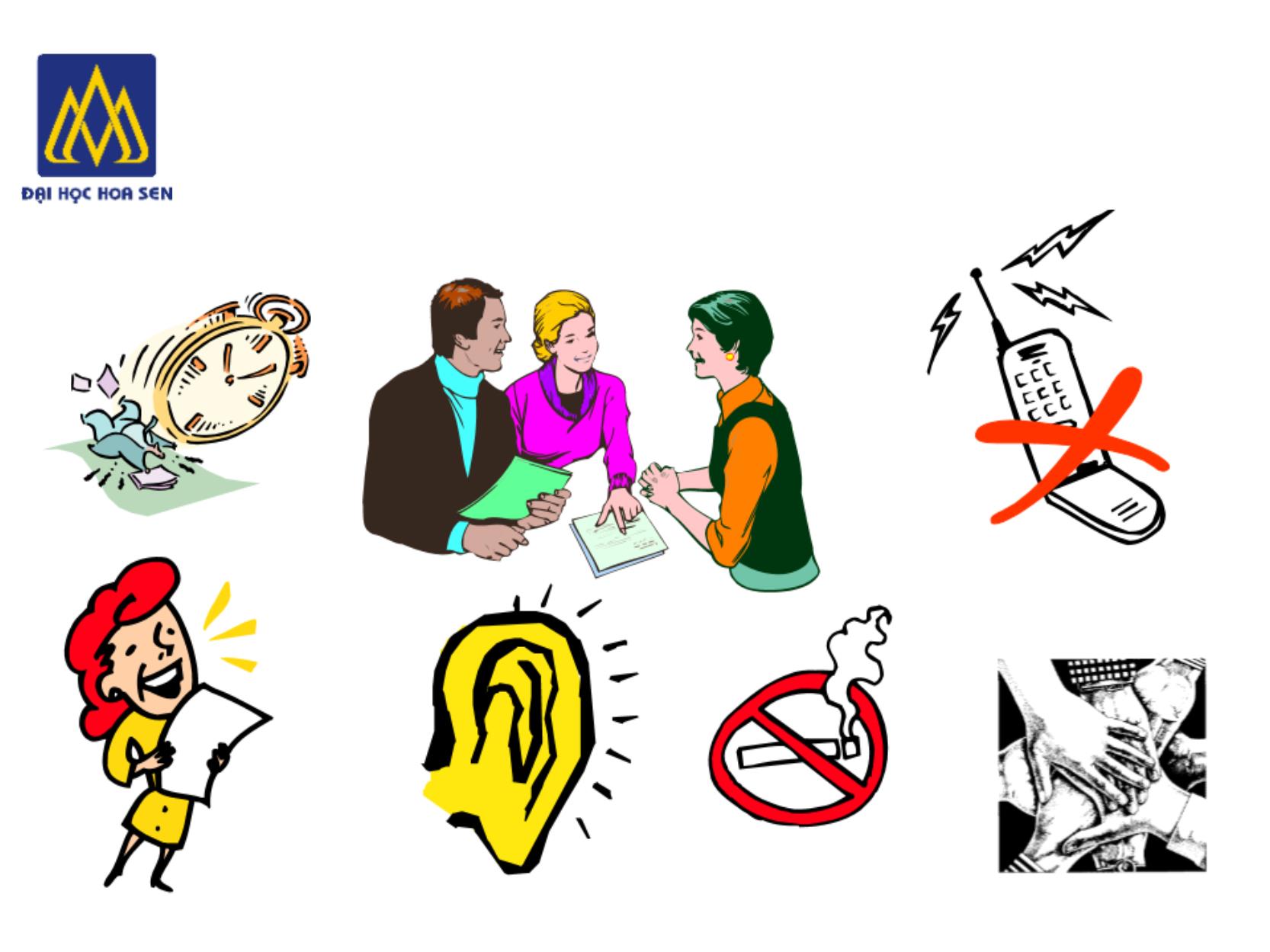
Trang 2

Trang 3
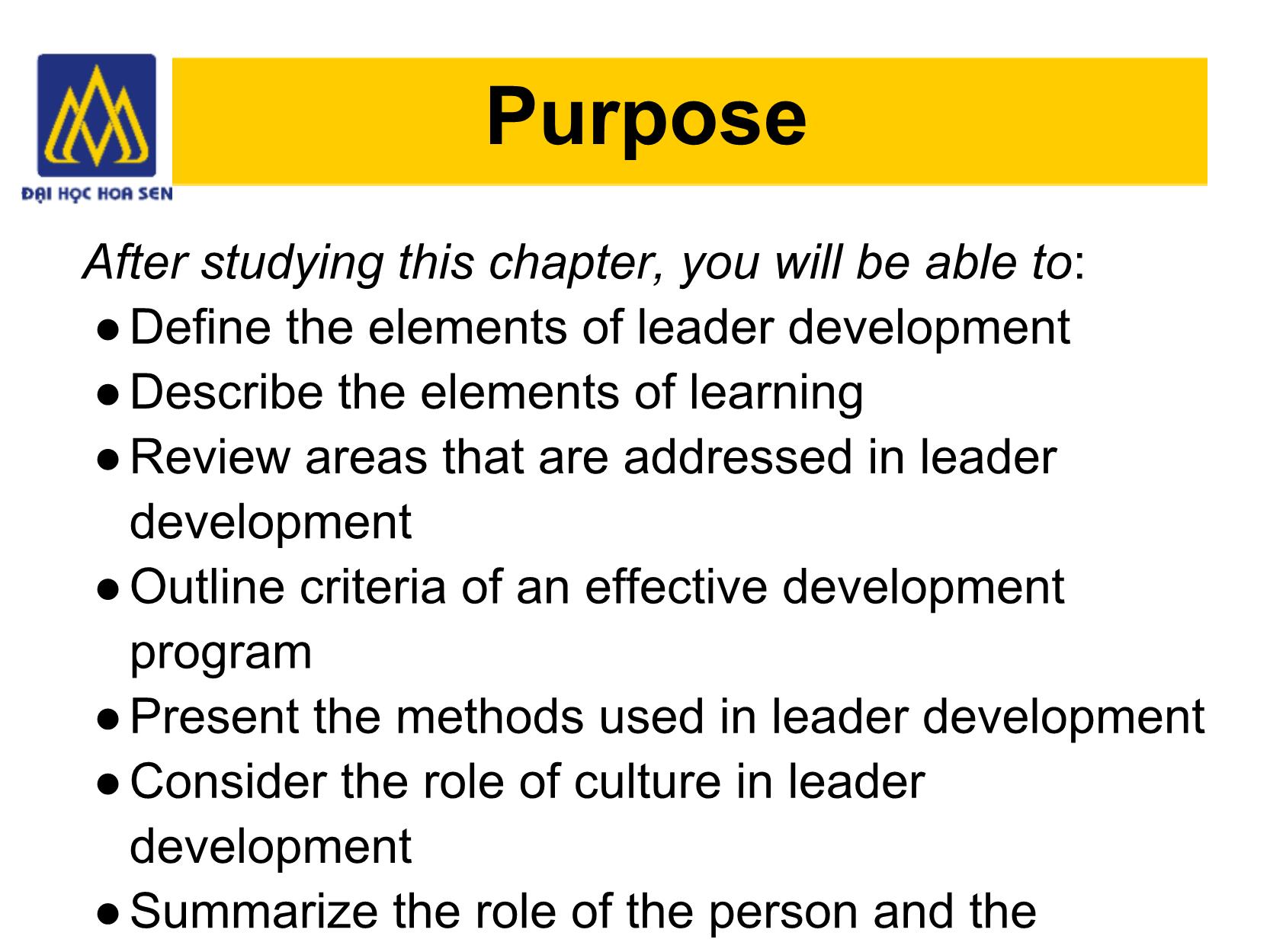
Trang 4
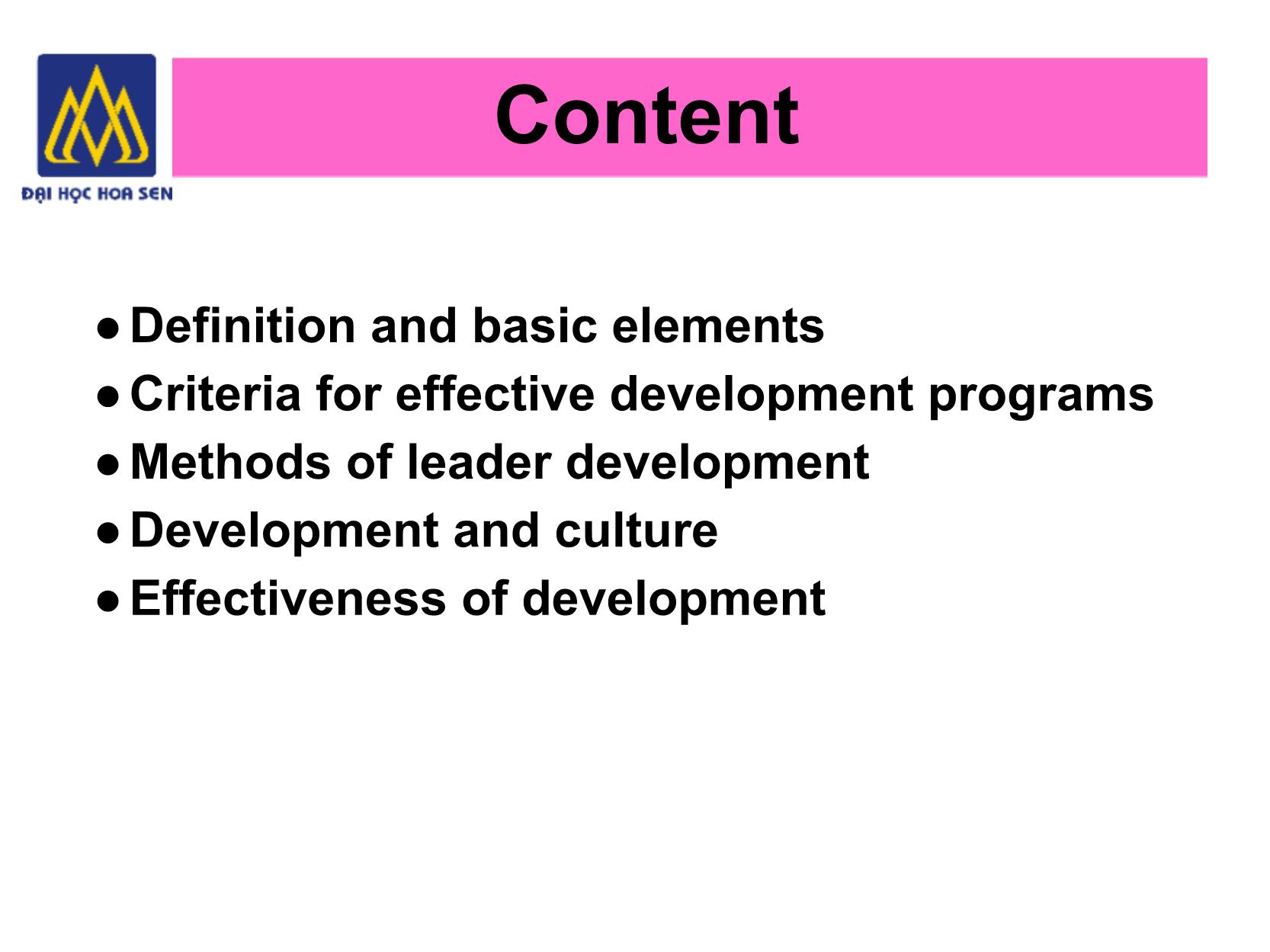
Trang 5

Trang 6
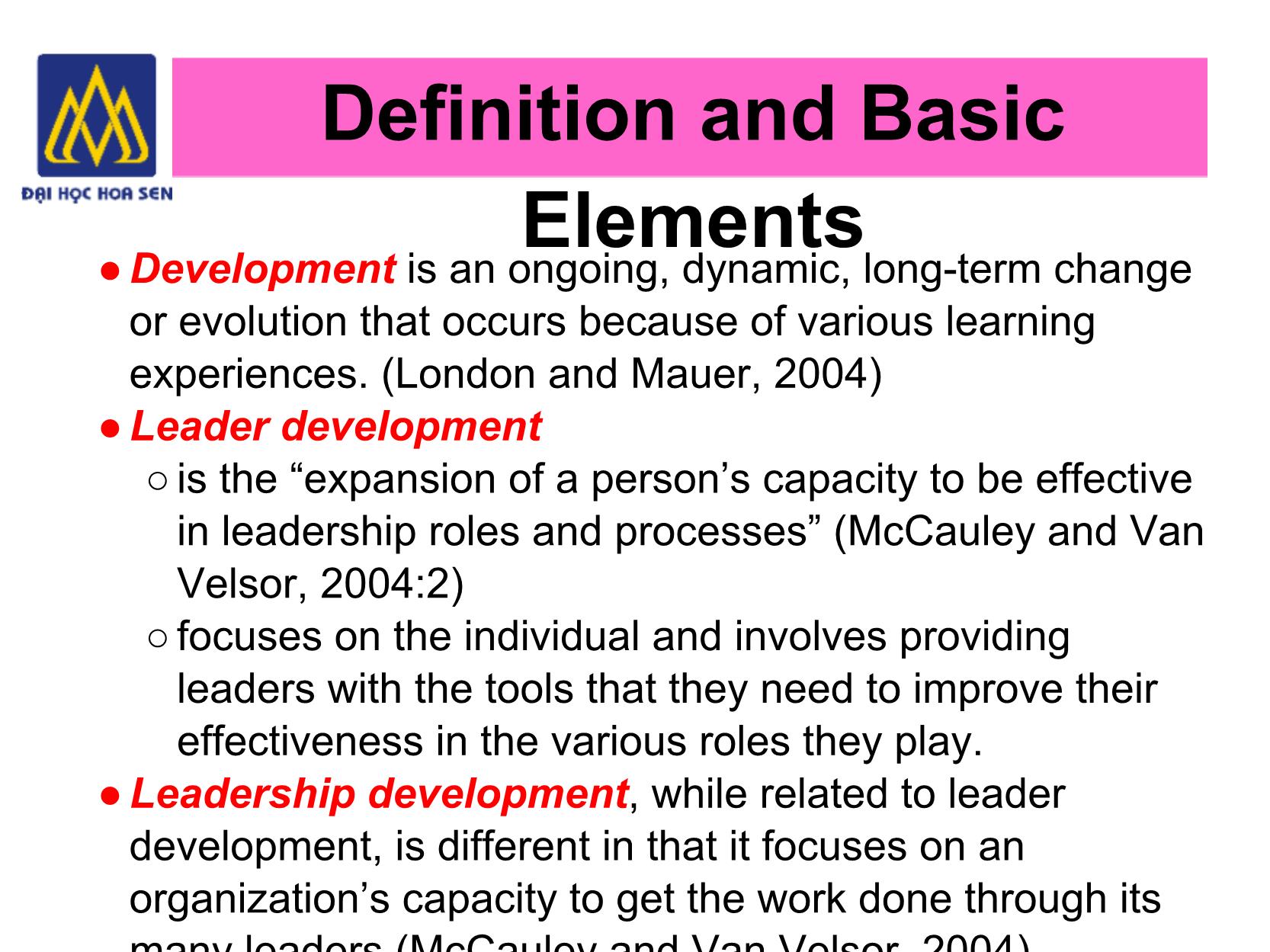
Trang 7
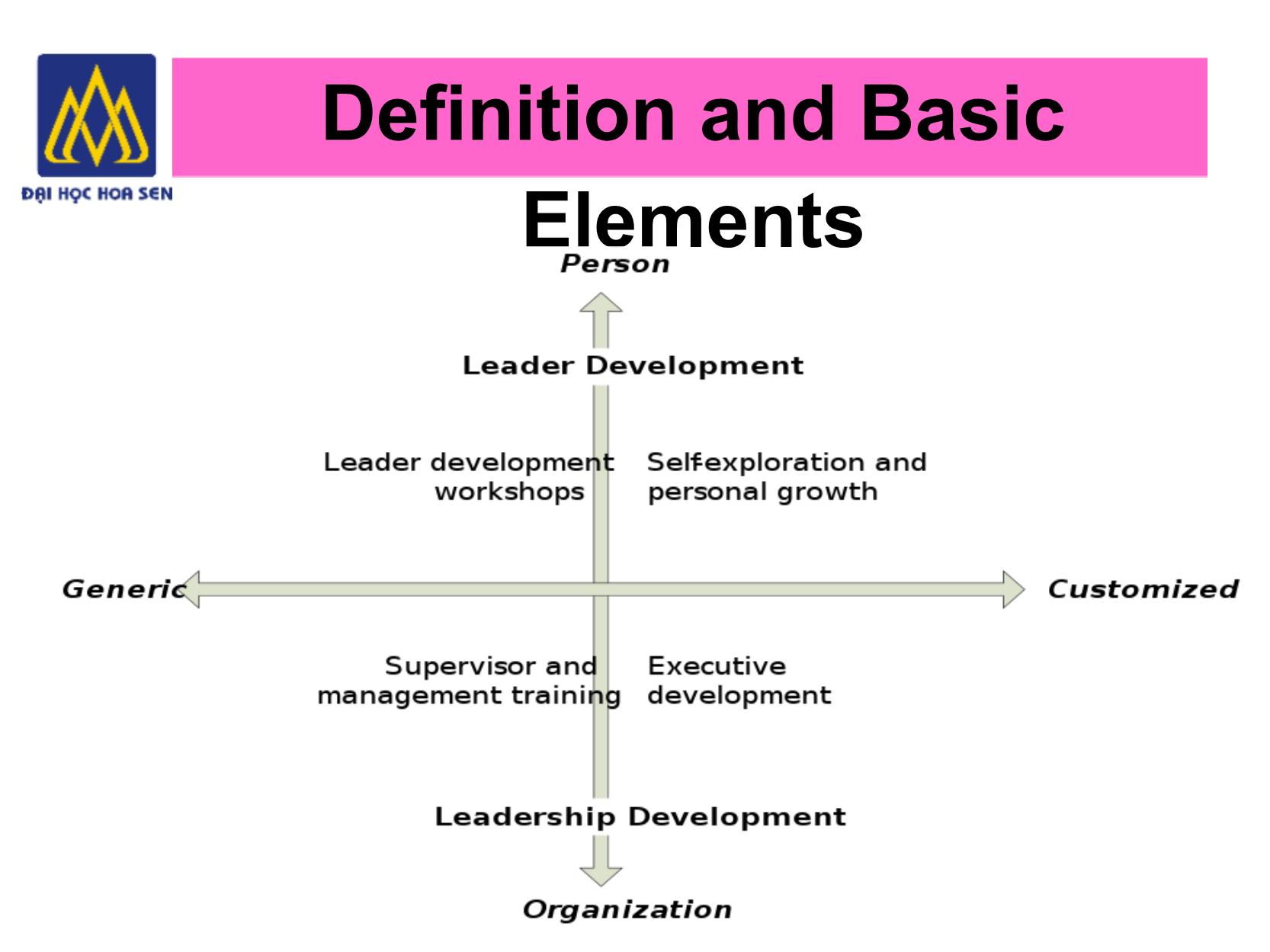
Trang 8
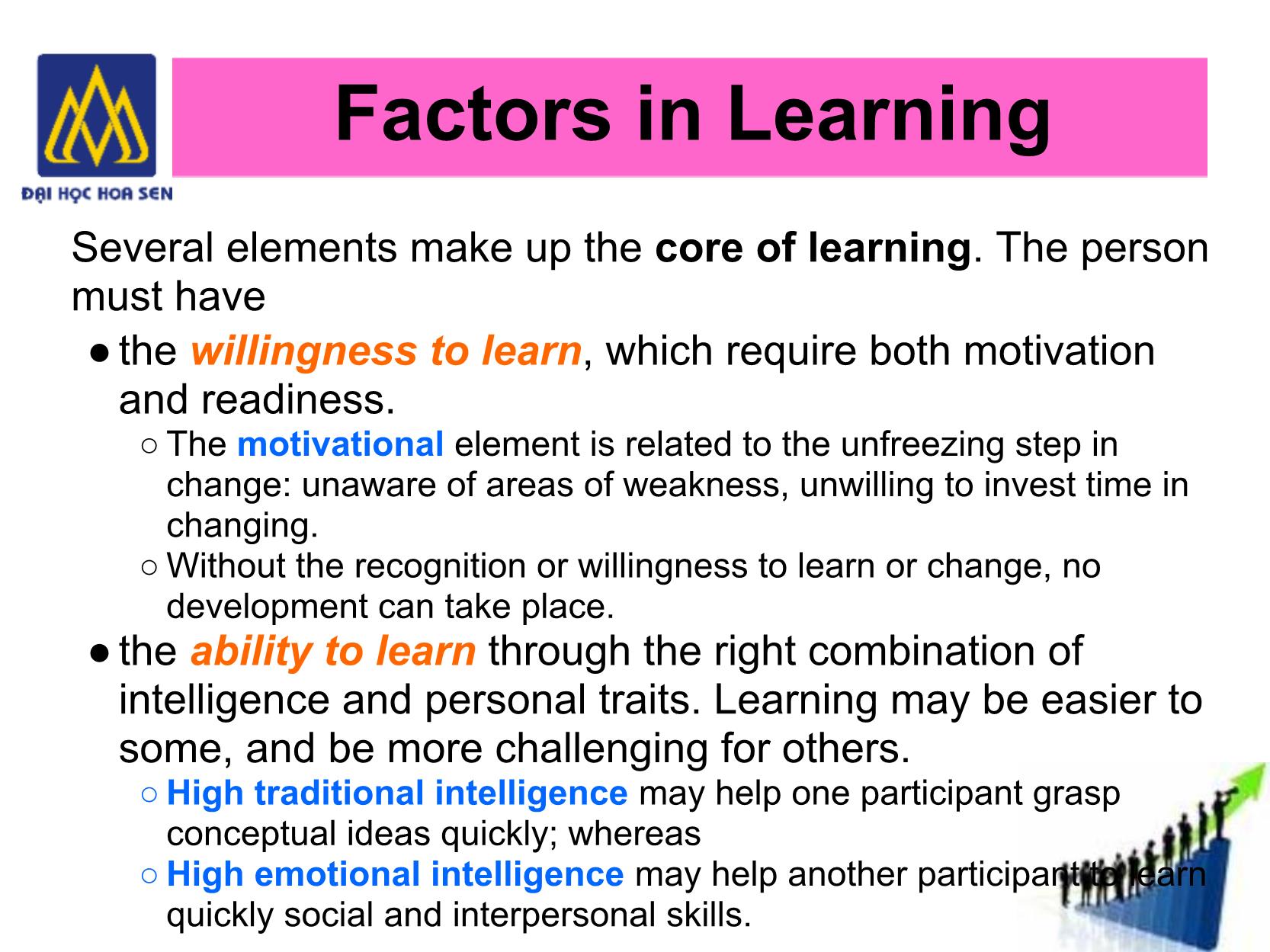
Trang 9
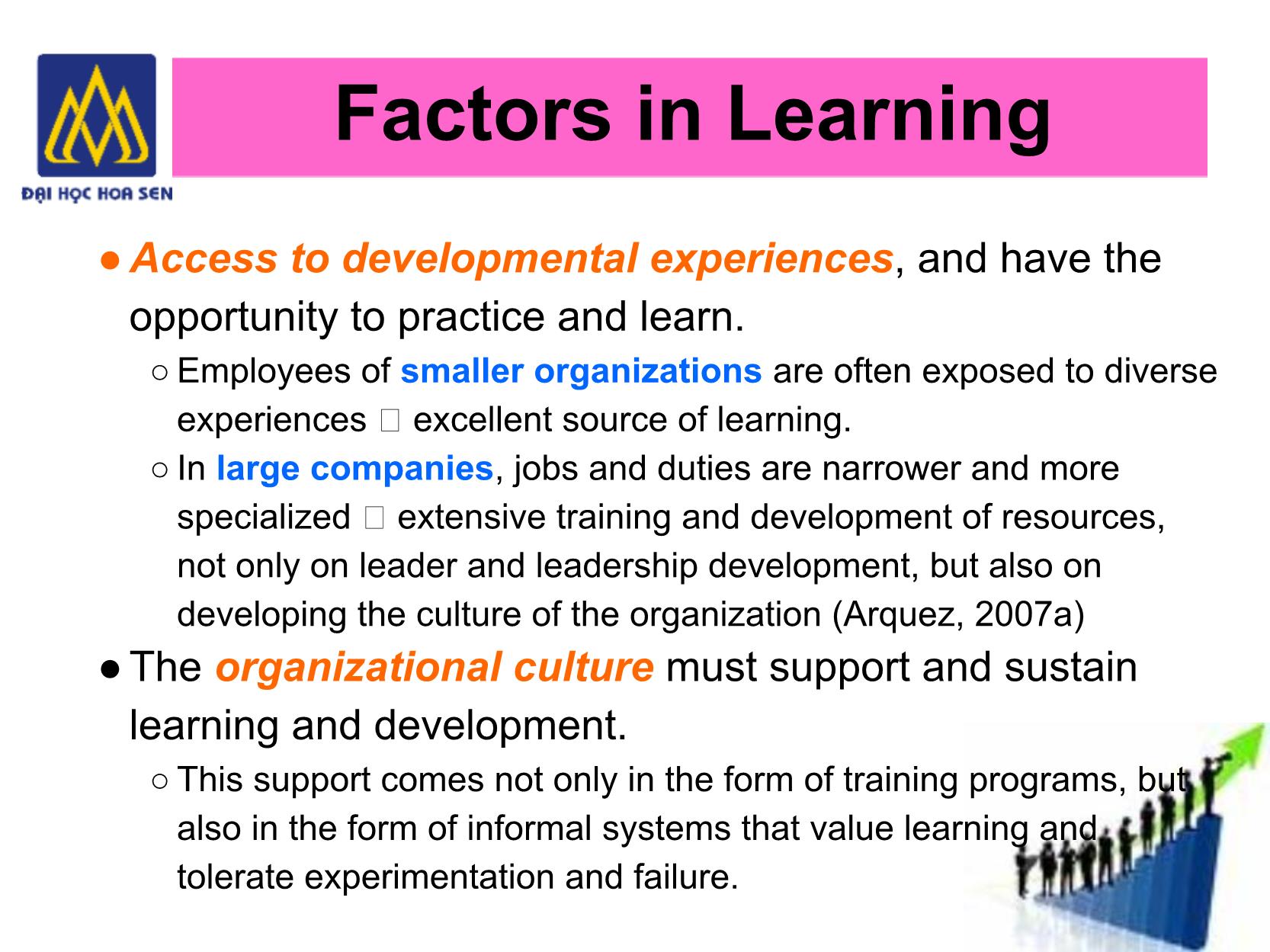
Trang 10
Tải về để xem bản đầy đủ
Bạn đang xem 10 trang mẫu của tài liệu "Bài giảng Nghệ thuật lãnh đạo - Chapter 6: Developing Leaders", để tải tài liệu gốc về máy hãy click vào nút Download ở trên
Tóm tắt nội dung tài liệu: Bài giảng Nghệ thuật lãnh đạo - Chapter 6: Developing Leaders

NGHỆ THUẬT LÃNH ĐẠO MSMH: NS301DV01 Chapter 6: Developing Leaders Purpose After studying this chapter, you will be able to: ●Define the elements of leader development ●Describe the elements of learning ●Review areas that are addressed in leader development ●Outline criteria of an effective development program ●Present the methods used in leader development ●Consider the role of culture in leader development ●Summarize the role of the person and the organization in effective leader development Content ●Definition and basic elements ●Criteria for effective development programs ●Methods of leader development ●Development and culture ●Effectiveness of development Chapter 6 6.1- Definition and Basic Elements Definition and Basic Elements ● Development is an ongoing, dynamic, long-term change or evolution that occurs because of various learning experiences. (London and Mauer, 2004) ● Leader development ○ is the “expansion of a person’s capacity to be effective in leadership roles and processes” (McCauley and Van Velsor, 2004:2) ○ focuses on the individual and involves providing leaders with the tools that they need to improve their effectiveness in the various roles they play. ● Leadership development, while related to leader development, is different in that it focuses on an organization’s capacity to get the work done through its many leaders (McCauley and Van Velsor, 2004) Definition and Basic Elements Factors in Learning Several elements make up the core of learning. The person must have ● the willingness to learn, which require both motivation and readiness. ○ The motivational element is related to the unfreezing step in change: unaware of areas of weakness, unwilling to invest time in changing. ○ Without the recognition or willingness to learn or change, no development can take place. ● the ability to learn through the right combination of intelligence and personal traits. Learning may be easier to some, and be more challenging for others. ○ High traditional intelligence may help one participant grasp conceptual ideas quickly; whereas ○ High emotional intelligence may help another participant to learn quickly social and interpersonal skills. Factors in Learning ● Access to developmental experiences, and have the opportunity to practice and learn. ○ Employees of smaller organizations are often exposed to diverse experiences � excellent source of learning. ○ In large companies, jobs and duties are narrower and more specialized � extensive training and development of resources, not only on leader and leadership development, but also on developing the culture of the organization (Arquez, 2007a) ● The organizational culture must support and sustain learning and development. ○ This support comes not only in the form of training programs, but also in the form of informal systems that value learning and tolerate experimentation and failure. Factors in Learning What is Developed: the Content Area Description Basic knowledge Information about content of leadership: definitions; basic concept such as communication, feedback, contingent rewards; typically through classroom education. Personal growth Self-awareness and understanding strengths and weaknesses; getting in touch with personal values, dreams and aspirations. Skills development: supervisory, managerial, and interpersonal skills How to apply knowledge, includes supervisor and managerial skills such as planning, goal setting, and monitoring, as well as conceptual skills such as problem solving and decision making, and skills related to managing interpersonal relations. Creativity Expanding ability to think in novel and innovative ways, and to think “outside the box”. Strategic issues Developing mission, strategic planning. Chapter 6 6.2- Criteria for Effective Development Programs Criteria for Effective Training Other conditions ● Clear objectives that are tied to organizational goals, the leader’ personal goals, and the current of future challenges the leader may be facing. ○ Such objectives must be stated ahead, and means of assessing them before and after the program must be available. ● Using a combination of tools and methods that provide parallel learning environments and address different learning styles or reinforce one another: ○ classroom education may be combined with an assessment center, coaching, and new assignment. ● Assessment and follow-up that measure change and support the new learning, and assure that new behaviors, skills, and styles are not forgotten or not used when the development program is over. ○ Learning takes practice and persistence, and such opportunities should be present outside the training session. Chapter 6 6.3- Methods of Leader Development Self-awareness ● The essential role of self-awareness in effective leadership is a key theme in leadership practice and research (Kaiser and Kaplan, 2006; Wood and Vikinas, 2007). ● Personal reflection and getting feedback from others are necessary elements of developing self-awareness (Argyris, 1991) ● Guidelines for increasing self-awareness: ○ Clarifying one’s values and priorities. The person must know what is important and what factors have priority. ○ Seeking new experiences that will challenge the leader to move outside the zone of comfort, and provide an opportunity to learn something about oneself, including opportunities to fail. ○ Seeking feedback through formal and informal channels as often as possible, from as many diverse sources as possible. Experience ● Having on-the-job experience is, in almost all organizations, essential to leadership. ○ One cannot learn to lead by sitting in a classroom, reading about leaders, or observing other leaders. Transmitting information through the classroom or observation is one thing; learning to exercise judgment, understand complex systems, and act on complex information requires hands-on practice (Daloz Parks, 2005) ● For job experiences to be developmental, it needs to stretch leaders and broaden their perspective by placing them in a novel and challenging situations (Ohlott, 2003) Coaching and Mentoring ● Coaching involves providing individualized and constructive feedback on someone’s behavior and performance, while focusing on future improvement. ● Mentoring ○ provides similar individualized attention with a feedback and future orientation, but tends to be less task specific. ○ is a supportive long-term, formal or informal, professional relationship (McCauley and Douglas, 2004) ● Whereas mentoring can be informal, coaching tends to have a more structured and formal nature. Coaching and Mentoring ●Elements of Effective Coaching ○ Individual readiness and willingness to be coached ○ Consideration of wider organizational context and system ○ Consideration of individual goals, values and needs ○ Focus on performance and work-related issues ○ Sincere caring and concern ○ Advocacy for self-awareness ○ Meaningful feedback ○ Supportive climate Coaching and Mentoring ●Guidelines for establishment of productive mentoring relationships: ○ Find many mentors instead of looking to one person for all guidance. Different mentors can support the leader with different perspectives and expertise. ○ Find mentors at different levels; although typically mentors are more senior, peers, external people, and even followers. ○ Informal relationships that provide casual support. ○ Add mentors as roles and responsibilities change or as leaders’ transition to new jobs. Feedback Intensive Programs ● Feedback Intensive Programs, such as 360 degree feedback or other multi-source and multi-method feedback programs. ● The goal is to assess leaders’ strengths and weaknesses, and to identify development needs. ○ Assessment is based on a combination of interviews, aptitude tests, personality tests, role plays, simulations, and experimental exercises ○ In 360 degree and multi-source feedback programs, the leaders are assessed by individuals around them, including followers, colleagues, supervisors, and in some cases, clients and other stakeholders who provide detailed feedback regarding their styles, behaviors, and performance. Factors that contribute to the success of 360 degree feedback program Factors that contribute to the success of 360 degree feedback program Factor Description Organizational buy-in and readiness All levels of the organization must be well informed and prepared regarding process, content, and goals of program. Top management support is particularly essential. Confidentiality and careful administration Maintaining anonymity of the raters and confidentiality in the process assure continued trust in the results and goals. Careful administration of surveys and handling of data are also essential. Well-trained facilitator Program success requires the skills of a well- trained, professional, internal or external facilitator to help interpret the information, and deal with sensitive data and discomfort. Focus on behaviors The feedback should focus on specific behaviors that are related to job performance, rather than general evaluative statements. Factors that contribute to the success of 360 degree feedback program Factor Description Clear explanation of purpose and goals Those providing feedback and the leader receiving the feedback should be very clear on the goal of the program, and how data will be used. Separate feedback from groups Present the leader with separate feedback from each group or source to help clarity, interpretation and understanding. Follow-up The initial step of increasing leaders’ self-awareness must be followed up with action plans. Combine with other developmental programs The feedback increases awareness but without other developmental tools, does not provide the leader with the means of changing behaviors. Classroom Education ●Organizations to provide their employees with some sort of educational benefit programs: instruction in universities ●Used in supervisory and mid-level management and leadership training programs ●The primary goal of classroom education is to transfer knowledge. ●Classroom methods: lectures and discussion, case studies, role playing, exercises, debates, games, and simulations. Outdoor Challenges ●Outdoor challenges programs: put participants physically and mentally through increasingly difficult physical activities, such as obstacle courses, climbing, sport competition, and games. ●Purposes: ○ Learning self-management, self-discipline, and teamwork ○ Personal growth, and increasing self-confidence by conquering fears and challenges ○ Building trust and cooperation among members Chapter 6 6.4- Development and Culture Development and Culture ●Culture impact people’s expectations of the learning context, the role of the facilitator, and what methods they prefer. ●Cultural values affect how the learning process is implemented, how feedback is provided, and the setting in which learning and development can be optimized. Leader development must therefore be considered within the cultural context (Hoppe, 2004) Cultural Values and Leader Development Cultural Values Potential Impact on Leader Development The communication context (high-low); directness How information is communicated; how feedback is given; who provide feedback; directness of message in case of assessment and self- development. Individualism- collectivism Focus of development on the individual leader or on the group; setting for development and training. Action-oriented Content of development and training focused on practical matters and hands-on training, or on theoretical understanding and conceptual development. Tolerance for ambiguity Degree of exposure to new and challenging situations. Perception of time Focus on quick and short-term development. Power distance and equality Development provided to all or only individuals identified as high potentials; implementation of 360 degree feedback. Chapter 6 6.5- Effectiveness of Development 3 factors that support leader development ● Individual leader’s commitment to learning and growth. The leaders must be dedicated to their own department. ● Organizational commitment. No leader can sustain new behaviors without organizational support from supervisors and coworkers. ● Integration of the program with overall organizational vision, mission and strategic goals. Fit between the needs of individual leaders and the organizational direction. Leader development, while aimed at increasing organizational effectiveness through increasing leader’s effectiveness, must also consider the personal effectiveness of the leader. Organizational and Personal Factors in Development Questions?
File đính kèm:
 bai_giang_nghe_thuat_lanh_dao_chapter_6_developing_leaders.pdf
bai_giang_nghe_thuat_lanh_dao_chapter_6_developing_leaders.pdf

